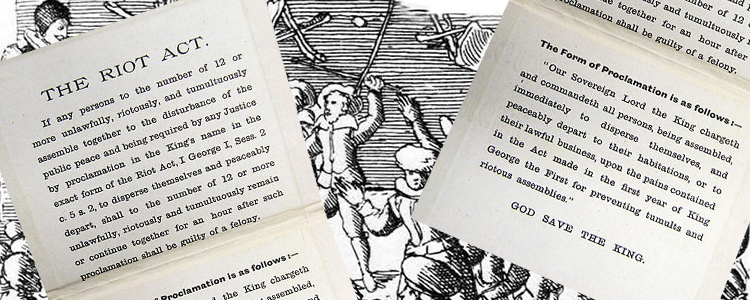In 16th century Scotland, a series of riots began to unfold along the East coast. Believed to have started in Fife, the riots quickly escalated and involved hundreds, and in some cases, thousands of angry protestors. Shipping ports were raided by weapon-wielding locals who assaulted crew members and destroyed grain-exporting ships. Granary deposits, warehouses and stores were broken into and their contents stolen as dozens of men, women and children fought for their ill-gotten supplies. The reasons behind the riots were not so much about the cost of grain, but more to do with the perceived shortage of it, as we continued to export it in massive quantities, often leaving very little for those at home.
The fact that the riots around this time featured in predominantly Jacobean-supported towns and burghs lends itself to the opinion that perhaps the riots were not so much about the fear of food shortages, and perhaps had more to do with the idea that people were opposed to trading our supplies with those who did not support the Jacobite cause. Whilst there is no evidence to directly support this, it is a widely-believed theory, and one which casts a different light on the proceedings at that time.
Anyone standing in the way of the rioters were beaten, and, in some extreme cases, killed. In Dundee, alarmed traders and officials called upon armed forces to attempt to quell the rabble after extensive damage was caused to ships, storehouses and shops. In their efforts to gain the upper hand, troops fired upon the rioters, causing at least one reported death. The Riot Act had been formed, declaring that any group of twelve or more people, deemed to be unlawfully assembled, were required to disperse or face punitive action.
Meal riots were not uncommon, and were not restricted to Scotland, hence the introduction of the Act in 1714. However, the proclamation of the Act itself was not without peril, as it required local officials to read aloud the conditions of the Act to the rioters, giving them one hour to disband or face punishment of death. The problems with the implementation of Act were many: in the first instance, it was difficult to find officials who were brave enough in the smaller districts to stand and read the Act to the rioters. Secondly, trying to shout over a screaming, rioting rabble of people was sometimes impossible. Thirdly, the part of the Act which was to be read was sometimes never read in full, allowing for those convicted to appeal their case and return to their communities without charge. Adding to this, and probably the most frustrating aspect for those trying to police the riots was that it was very difficult to round up every single suspected rioter, meaning that many walked away without apprehension or charge.
Attempts were made, however, to make “examples” of some of the apprehended rioters, and those unfortunate enough to be sentenced were “transported” out of the country for years at a time. In more extreme cases, some were never allowed to return. It must be noted that capital sentencing was never actually carried out, despite repeated threats of the death sentence. Thomas Gilkie, an influential Dundee rioter, along with others from surrounding areas found himself stripped of his burgess-ships and was banned from trading within his locality.
The wording that had to be read out to the assembled gathering was as follows:
“Our Sovereign Lord the King chargeth and commandeth all persons, being assembled, immediately to disperse themselves, and peaceably depart to their habitations, or to their lawful business, upon the pains contained in the Act made in the first year of King George the First for preventing tumults and riotous assemblies.
God Save the King!”
What made matters worse was that, if, for any reason, the paper on which the Act was written was stolen or damaged during the reading, it was deemed that the Act was never read, and the rioting continued.
To this day many jurisdictions that have inherited the tradition of English common law and Scots law still employ statutes that require police or other executive agents to deliver an oral warning, much like the Riot Act, before an unlawful public assembly may be forcibly dispersed.
Because the authorities were required to read the proclamation that referred to the Riot Act before they could enforce it, the expression “to read the Riot Act” entered into common language as a phrase meaning “to reprimand severely”, with the added sense of a stern warning. The phrase remains in common use in the English language.
On 4th December, 1816, there was yet another meal riot in Dundee, described at the time by Sheriff Duff as “one of the greatest in modern times”. For four days, a mob raged through the town, robbing and pillaging as they went, causing untold damage to people and property.
– DD Tours operates walking tours in Dundee city, covering dark local history such as wars, battles, murders, diseases, riots, disasters and executions. Walk with us for an unforgettable storytelling experience.
***
***

